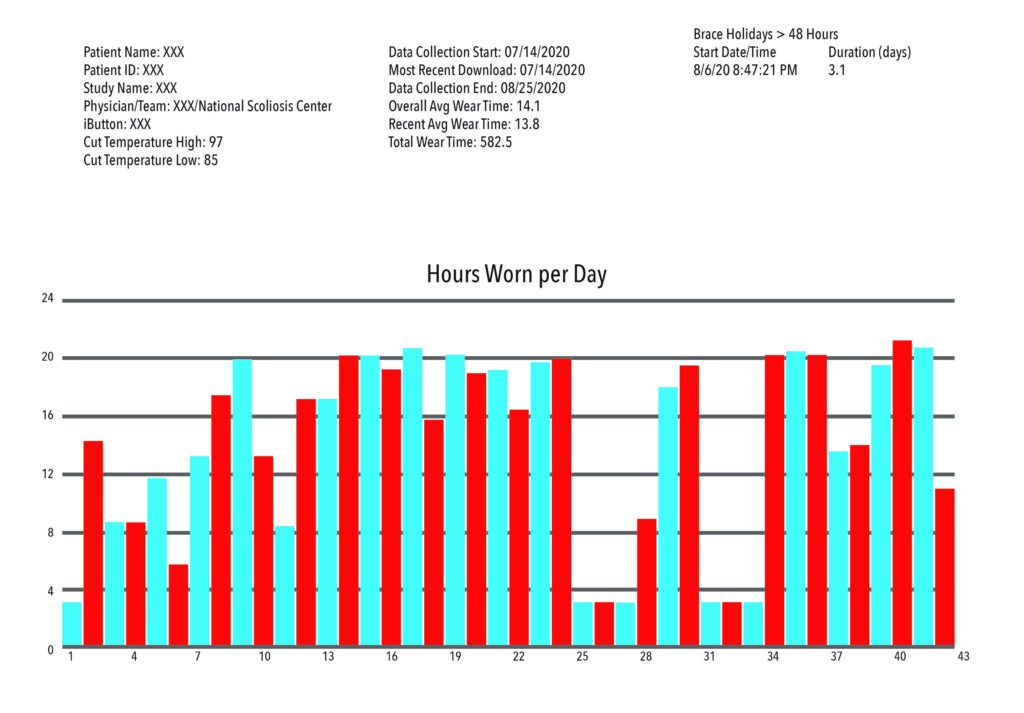Successful scoliosis treatment for teens and children who select bracing to help them avoid surgery primarily depends on two factors – competency of the medical care team and brace wearing compliance by the patient. One of the biggest challenges for parents and the care team is monitoring the actual brace wear time. That’s where the iButton comes in – the iButton accurately tracks brace wearing time.
Most patients prescribed wear time is 18-21 hours per day; however, getting them to achieve this level of wear time can be a real challenge. Some may say (or think) they are wearing their brace for the prescribed time, but they are actually coming up a few hours short. At National Scoliosis Center, we work with our patients’ orthopedic specialist to increase adherence to brace wear time by using an iButton. The iButton is a small ‘watch battery sized’ sensor device that is placed in a patient’s brace under a foam pad so the patient cannot feel it. Wear time data is downloaded during follow up appointments and displayed in an easy-to-read report. “The best thing about the iButton is that the patient, their family, and the medical care team can get a direct visual on how the patient is adhering to the prescribed brace schedule. The iButton gives us the most accurate reading,” says Kristian Christensen, Certified Orthotist at National Scoliosis Center.
The iButton can show a patient directly how well, or how poorly, they are wearing their brace. Generally speaking, the more hours a brace is worn, the more likely it will stop or slow curve progression. Conversely, insufficient wear time can result in curve progression. Orthotist Assistant Christen McAree reviewed the graphic report below and said, “You see a patient who ‘felt like’ she was wearing the brace full prescribed hours, with the only exception being for sleepovers. But we can see that missing a few hours here and there makes a big difference. Her actual average wear time [14 hours] is down and consequently, her curve went up.” The benefit of the iButton tracking in this case (and many others) is that both the patient and parent go home motivated to wear the brace.

“What we’ve found using the iButton is that the self-reported wear time is often 4-5 hours more than the actual wear time and, again, the key to successful bracing is brace adherence by the patient,” says Luke Stikeleather, Chief Orthotist and founder of National Scoliosis Center. The goal is to help motivate patients to improve their compliance and achieve successful non-operative treatment for their scoliosis.
